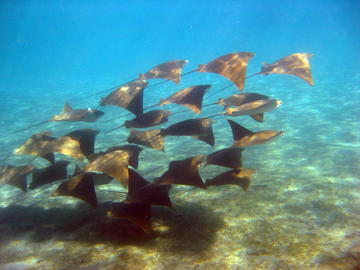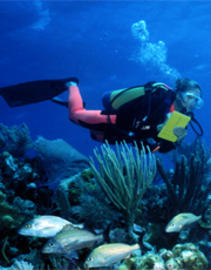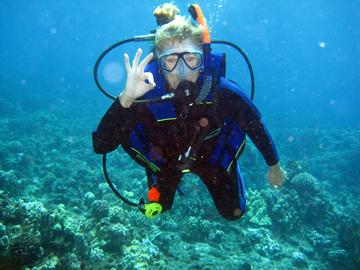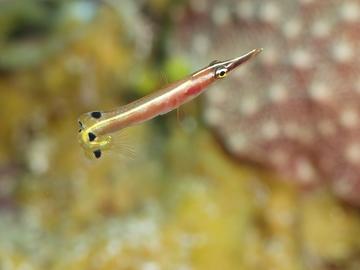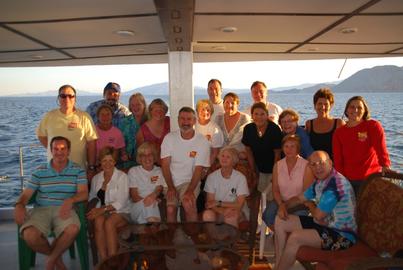Some of the best dive sites for fishwatching are in the least obvious places. The Blue Heron Bridge in Palm Beach, Florida, is one such biological hotspot. This is a top dive destination for sighting unusual species that can be added to your lifelist. Mike Phelan, REEF Expert surveyor, and two other REEF members, often dive this site. The day before Thanksgiving, they were treated to quite a sight – a large school of Cownose Rays!
World-wide declines in shark and ray populations have prompted the need for a better understanding of their patterns of distribution and abundance. While much of the focus has been on the larger species of sharks, little attention had been paid to the most frequently sighted elasmobranch species in the greater-Caribbean, the yellow stingray (Urobatis jamaicensis). Despite being relatively common and listed as Least Concern on the IUCN Red List, little was known about the status of this species. Unfortunately, it has been quietly declining. Dr.
Recent concerns about changing elasmobranch populations have prompted the need to understand their patterns of distribution and abundance through non-destructive sampling methods. Since scientific divers represent a small portion of the total number of divers worldwide, the use of non-scientific divers could drastically increase the number of observations needed to monitor broad-scale, long-term trends.
Every month, scientists, government agencies, and other groups request raw data from REEF’s Fish Survey Project database. Here is a sampling of who has asked for REEF data recently and what they are using it for:
- Researchers at the World Resources Institute are using western Atlantic REEF data in an analysis of threats to the world’s coral reefs called Reefs at Risk Revisited.
- A scientist from Washington Department of Fish and Wildlife is evaluating population trends of rock scallop in preparation for harvest rule updates.
REEF members are at the heart of our grassroots marine conservation programs. Over 43,000 divers, snorkelers, students, and armchair naturalists stand behind our mission.
REEF is proud to partner with over 130 dive shops, dive clubs, individuals, and other organizations as REEF Field Stations.
We are proud to share our completely revised e-newsletter, “Making It Count”. We have put more focus on how REEF members, partners, and the survey project database are making an impact in communities and marine conservation. We hope you enjoy the new format! Feel free to send us feedback. A special thanks to California REEF member Jackie Patay for designing the newsletter banner.
Current Most Active Surveyors
Conducted the most surveys in the last three months:
TWA – Peter Leahy (169), Michael Phelan (67), Dave Grenda (48)
NE – Jason Feick (9), John Feehan (8), Michael MacDonald (7)
PAC – Rhoda Green (36), Jan Kocian (34), Betty Bastai (31)
TEP – Carol Cline (16), Daniel Richards (12), Gerald Winkel (3)
HAW – Don Judy (41), Rick Long (34), Flo Bahr (23)
To date, 140,234 surveys have been conducted by REEF volunteers.
Field Surveys – Eighteen REEF members joined Drs. Christy and Brice Semmens earlier this month on a Field Survey to the Sea of Cortez aboard the Rocio del Mar live-aboard. The team conducted over 300 surveys in 20 locations around the Midriff Islands, many of which were new to the REEF database. It was a great trip, with 130 species of fish found, beautiful topside scenery, and pods of sperm and pilot whales!

